TECH ANALYSIS: Mercedes stick to their guns on unique sidepod design with new W14

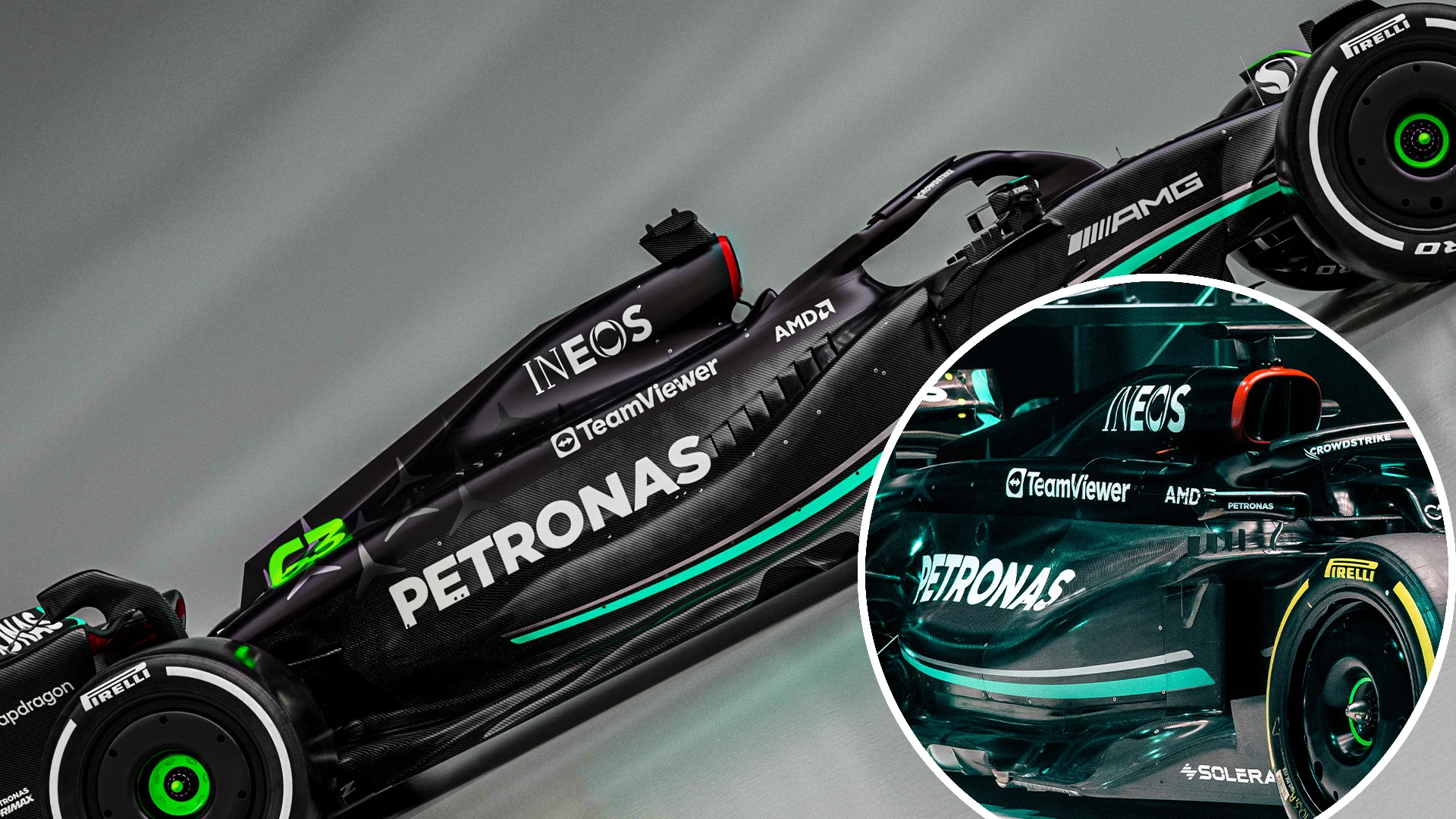
Mercedes are aiming to bounce back from a tough season last year with the new W14, but a look at their launch car hints that the Silver Arrows have continued with the concept of this car's unique-looking predecessor. F1 technical expert Mark Hughes examines why...
With their new F1 W14, Mercedes hope they have taken the good bits of last year’s problematical W13 – namely very good high-speed downforce – but eradicated the bouncing and porpoising which so limited its potential and made it such a difficult drive.
READ MORE: Mercedes explain choice of naked carbon for new W14 F1 car
The W14 retains many of the previous car’s highly individualistic details, such as the narrow vertical inlets for the radiators, the extensive area of exposed floor, and the use of the exposed upper ‘sis bar’ (the side impact bar) to direct airflow downwards onto the top of the sidepods.
But the lower sidepod contours have been smoothed out in profile, fattened towards the front and elongated towards the back. The sidepods no longer merge indistinctly with the engine cover but instead are separated by a high cooling cannon which carries the expelled air from the radiators and exits it out the back, either side of the exhaust.
This has reduced the need for the big cooling louvres on the sidepod top (although there is probably the option there to introduce louvres for the hotter races).
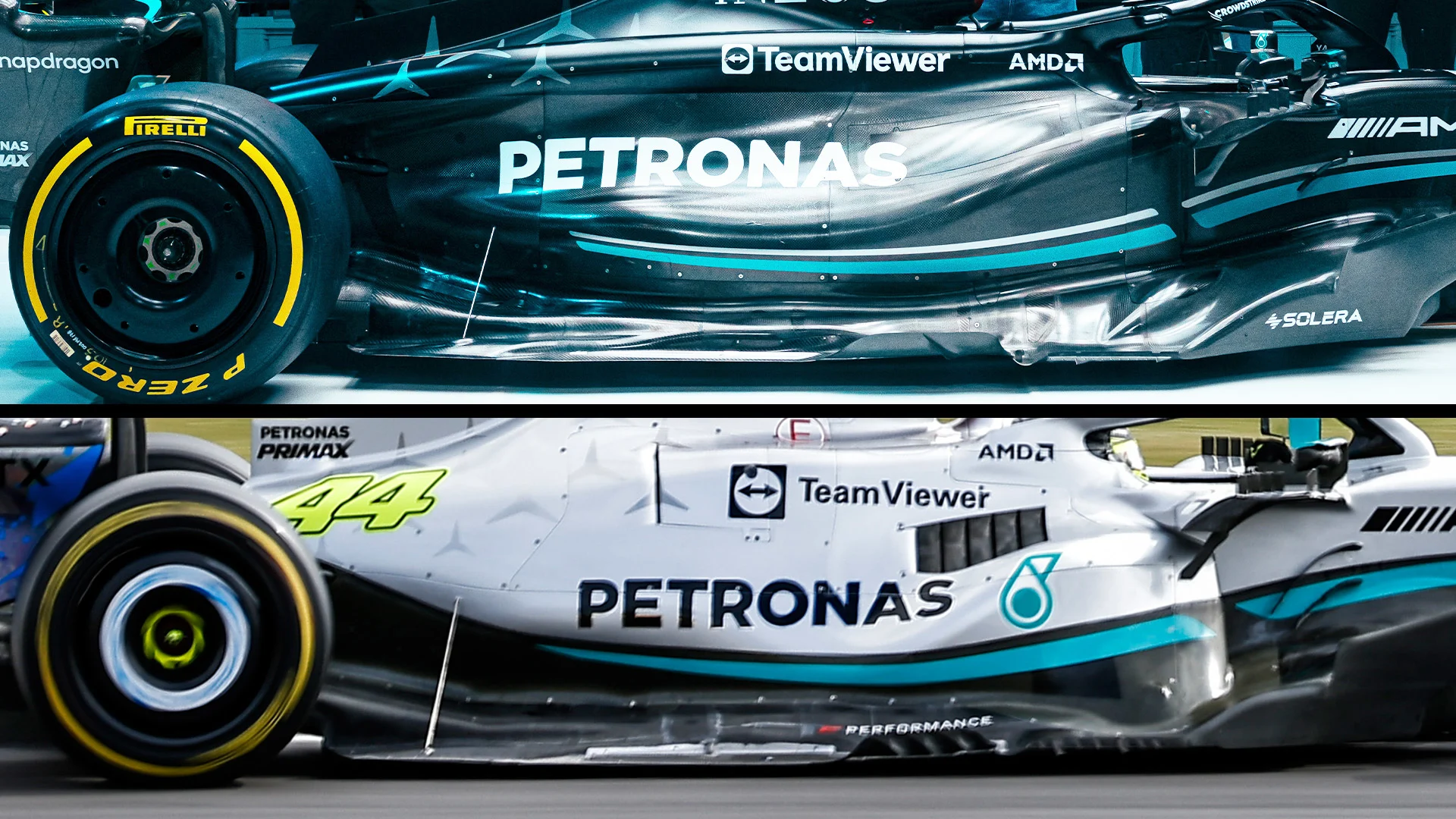
Technical director Mike Elliott admitted: “Last year there were times when we were questioning ourselves and asking have we made a major mistake, do we need to change what we are fundamentally doing? But you know if you tear it all up and start again, you’re going to start further back than where you are.
“It’s better to take the car you’ve got and build on it. Although we had a lot of problems with the car last year, there was also a lot of goodness in the car, there were things it did well. You have to be careful not to throw those things away by starting again.”
GALLERY: Take a closer look at the Mercedes W14 2023 F1 car and livery
These thoughts were underlined by team boss Toto Wolff: “We have analysed it back and forth and as you can see the sidepods are still very different to any other car. We believe this is not a performance-relative part. Obviously, there is no such thing as a holy cow.
“We are looking at everything. These are the first iteration of the sidepods and after a few races they will probably change a little. But as Mike says, if you change a concept you can end up going three steps backwards to take two forwards. I love the fact that we stayed bold and continued to follow what the science says for us.”
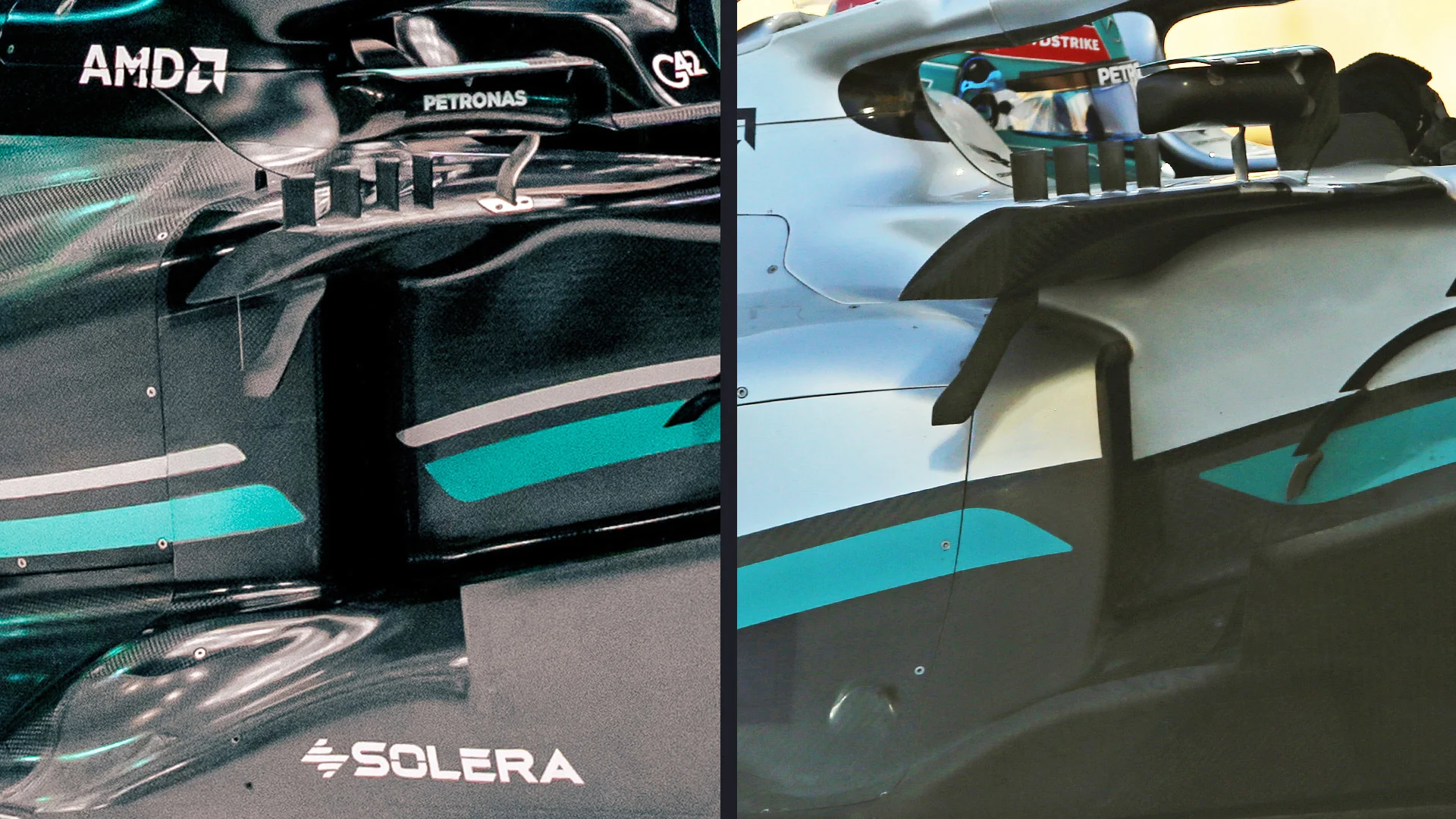
So there has been no switch to the more classic Red Bull bodywork geometry which most teams are now following – nor to the Ferrari’s.
Instead Mercedes have opted for an aerodynamic evolution of their initial response to the ground effect regulations, one which will almost certainly entail an evolved underfloor design too.
But there are significant mechanical changes, which the team hope will get them out of the corner they’d boxed themselves into with last year’s car.
ANALYSIS: Are the ingredients in place for Ferrari to finally bring title glory back to Maranello?
The most significant of these – a completely new rear suspension (albeit still pullrod) – wasn’t really on show at the launch before the car was taken off to Silverstone for its shakedown. But the target was to give the car a bigger range of suspension travel so as to not require the super-stiff settings to stabilise the aero platform, which was a major part of the bouncing problem.
If Mercedes are correct in their assessment that the barriers to solving last year’s aerodynamic difficulties were mechanical, then we should finally see the true potential of this very distinctive aerodynamic concept.
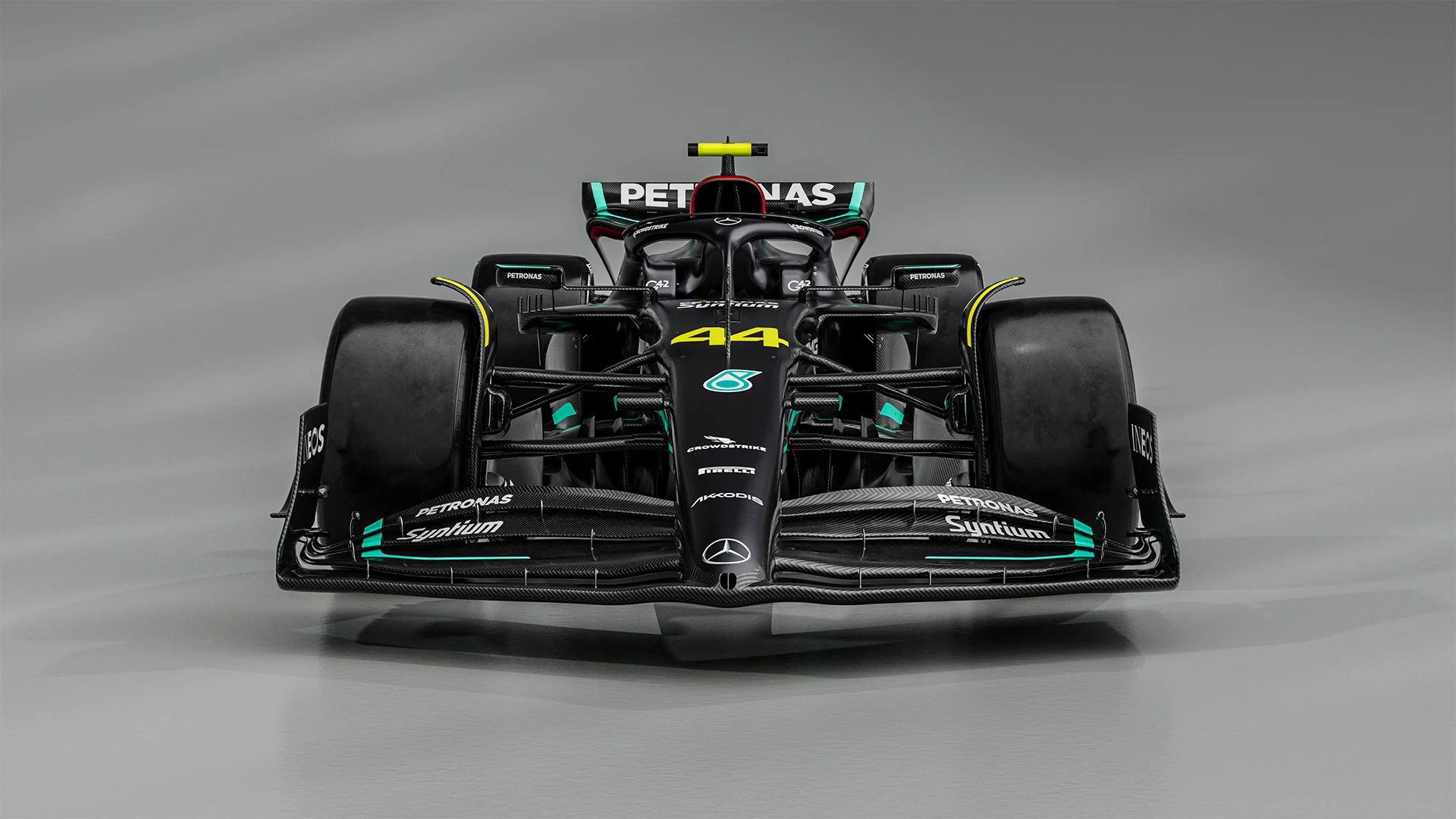
More technical analysis of the 2023 F1 cars
Ferrari's 2023 SF-23 – A complete redesign or subtle evolution?
Mercedes stick to their guns on unique sidepod design with new W14
Is it a case of evolution or revolution for McLaren’s new MCL60?
What we learned from a first look at the brand-new Alfa Romeo C43
Unpacking the 'aggressive' new Aston Martin AMR23
The key design features revealed by Haas’s shakedown runs in the VF-23
Why AlphaTauri’s livery launch gave us some fascinating clues about the AT04
Williams continue Red Bull-like trend with FW45 design
Next Up
Related Articles
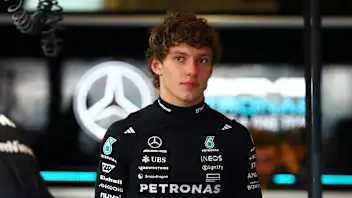 Antonelli picks standout moments from rookie season
Antonelli picks standout moments from rookie season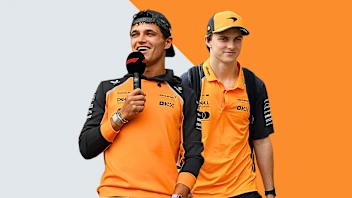 End Of Year Reports 2025McLaren’s best and worst moments from 2025
End Of Year Reports 2025McLaren’s best and worst moments from 2025 F1 Arcade announces opening date for new Atlanta venue
F1 Arcade announces opening date for new Atlanta venue BarrettoLawrence Barretto’s 5 bold predictions for 2026
BarrettoLawrence Barretto’s 5 bold predictions for 2026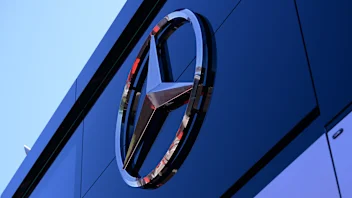 Mercedes confirm date for first look at 2026 F1 car
Mercedes confirm date for first look at 2026 F1 car.webp) ExclusiveZhou on why he has ‘high trust’ in Cadillac project
ExclusiveZhou on why he has ‘high trust’ in Cadillac project